Pad Mounted Transformer Sizes: The Ultimate Guide to Selection and Specification for Optimal Performance?
Are you struggling to choose the right size for your pad mounted transformer? You’re not alone. Many engineers find this task challenging and crucial for project success.
This guide provides comprehensive insights into pad mounted transformer sizes, covering selection criteria, performance impacts, and industry-specific considerations. It aims to help engineers and project managers make informed decisions for efficient and reliable transformer installations.
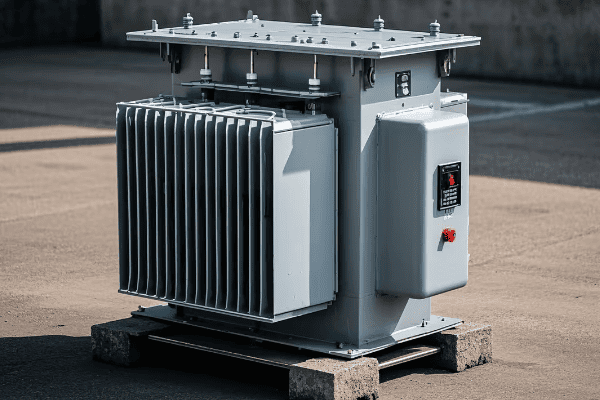
As an experienced electrical engineer, I’ve worked on numerous projects involving pad mounted transformers. I understand the complexities of size selection and specification. In this guide, I’ll share my knowledge to help you navigate these challenges effectively.
Understanding Pad Mounted Transformer Sizes: A Comprehensive Overview?
Have you ever wondered why pad mounted transformers come in such a wide range of sizes? The answer lies in the diverse power needs of different applications.
Pad mounted transformer sizes typically range from small units of 75 kVA to large ones exceeding 3000 kVA. These sizes are determined by factors such as power requirements, voltage ratings, and specific application needs.

Let’s dive deeper into the world of pad mounted transformer sizes:
Size Categories
Pad mounted transformers are generally categorized into three size groups.
Small Transformers:
- Typical range: 75 kVA to 500 kVA
- Common applications: Residential areas, small commercial buildings
I once worked on a residential project where we used a compact 150 kVA transformer. Its small size was perfect for the limited space available in the suburban setting.
Medium Transformers:
- Typical range: 750 kVA to 2000 kVA
- Common applications: Large commercial buildings, small industrial facilities
Large Transformers:
- Typical range: Above 2000 kVA
- Common applications: Industrial complexes, large commercial centers
Physical Dimensions
The physical size of transformers varies with their power rating.
Dimensional Trends:
- Height: Ranges from 4 feet to over 8 feet
- Width: Typically 3 to 8 feet
- Depth: Usually 3 to 8 feet
Voltage Class Impact
The voltage class significantly influences transformer size.
Voltage Considerations:
- Low voltage (up to 35 kV): Smaller overall dimensions
- Medium voltage (35 kV to 69 kV): Increased size for proper insulation
Cooling Methods and Size
Different cooling methods can affect the overall size of the transformer.
Cooling Types:
- ONAN (Oil Natural Air Natural): Most compact
- ONAF (Oil Natural Air Forced): Slightly larger due to fans
- OFAF (Oil Forced Air Forced): Largest due to additional cooling equipment
| Size Category | Typical kVA Range | Common Dimensions (HxWxD) | Typical Applications |
|---|---|---|---|
| Small | 75 – 500 kVA | 4’x3’x3′ to 5’x4’x4′ | Residential, Small Commercial |
| Medium | 750 – 2000 kVA | 6’x5’x5′ to 7’x6’x6′ | Large Commercial, Small Industrial |
| Large | 2000+ kVA | 8’x7’x7′ and larger | Industrial, Utility Substations |
In my experience, understanding these size categories is crucial for project planning. I remember a case where a client initially specified a transformer that was too large for their available space. By understanding the standard size options, we were able to recommend a more compact model that still met their power needs.
It’s important to note that while these are typical sizes, custom dimensions are sometimes necessary for specific applications. I’ve worked on projects where we had to design custom enclosures to fit unique space constraints while still meeting all safety and performance requirements.
Another key consideration is the relationship between size and cooling efficiency. Larger transformers often require more sophisticated cooling systems, which can impact their overall dimensions. In one industrial project, we had to carefully balance the size of the transformer with its cooling needs to ensure optimal performance in a high-temperature environment.
Don’t forget about future expansion needs when considering transformer sizes. I always advise clients to think about potential power requirement increases in the coming years. Sometimes, it’s worth opting for a slightly larger transformer now to avoid costly upgrades later.
Lastly, remember that size affects more than just physical fit. It also impacts maintenance accessibility, safety clearances, and even aesthetic considerations in some settings. Always consider the full context of your installation when evaluating transformer sizes.
Understanding pad mounted transformer sizes is more than just knowing numbers. It’s about comprehending how these sizes relate to performance, installation requirements, and long-term suitability for your specific application.
Size Selection Criteria: Matching Transformer Dimensions to Application Needs?
Are you unsure about how to select the right size for your pad mounted transformer? This decision is crucial and involves multiple factors that many engineers overlook.
Selecting the right pad mounted transformer size depends on factors like load requirements, voltage class, environmental conditions, and space constraints. Careful consideration of these elements ensures efficient operation and prevents costly oversizing or undersizing.
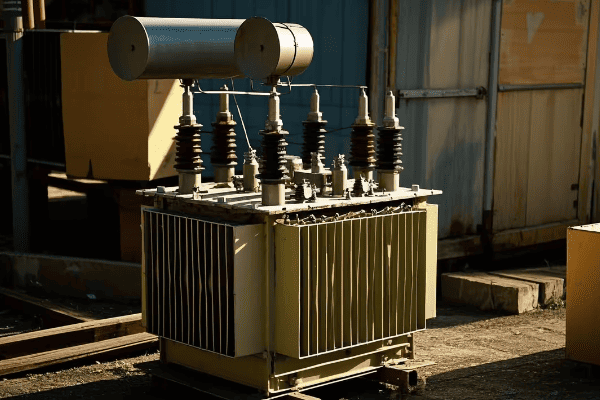
Let’s explore the key criteria for selecting the appropriate transformer size:
Load Requirements
The primary factor in determining transformer size.
Load Considerations:
- Current load demands
- Anticipated future load growth
- Peak load handling capabilities
I once worked on a project where underestimating future load growth led to premature transformer replacement. Always factor in potential expansion when sizing your transformer.
Voltage Class
Voltage ratings significantly impact transformer size.
Voltage Considerations:
- Primary voltage of the distribution system
- Required secondary voltage for end-use equipment
- Insulation requirements for different voltage classes
Environmental Conditions
The installation environment plays a crucial role in sizing.
Environmental Factors:
- Ambient temperature ranges
- Humidity and moisture levels
- Altitude considerations
- Exposure to corrosive elements
Space Constraints
Available installation space can limit transformer size options.
Space Factors:
- Site dimensions and layout
- Clearance requirements for safety and maintenance
- Accessibility for installation and future replacement
Efficiency Requirements
Energy efficiency standards can influence size selection.
Efficiency Considerations:
- Minimum efficiency standards set by regulations
- Cost-benefit analysis of higher efficiency models
- Long-term energy savings potential
| Selection Criteria | Impact on Size | Consideration Example |
|---|---|---|
| Load Requirements | Determines kVA rating | Future load growth projections |
| Voltage Class | Affects insulation needs | Higher voltage = larger size |
| Environmental Conditions | Influences cooling design | High temperatures may require larger unit |
| Space Constraints | Limits maximum size | Urban settings may require compact designs |
| Efficiency Requirements | May increase size for better performance | Higher efficiency could mean larger core |
In my experience, balancing these criteria is often challenging but crucial. I remember a project where we initially selected a transformer based solely on current power requirements. However, after considering the client’s five-year growth plan and space constraints, we opted for a slightly larger unit with higher efficiency. This foresight saved the client from a costly upgrade just three years later.
It’s important to note that oversizing can be as problematic as undersizing. I’ve seen cases where oversized transformers led to unnecessary energy losses and higher initial costs. The key is to find the sweet spot that meets current needs while allowing for reasonable future growth and maintaining efficiency.
Don’t underestimate the impact of environmental conditions on sizing. In a recent project in a high-altitude location, we had to account for reduced air density in our cooling calculations. This led us to select a larger transformer than would typically be needed for the same load at sea level.
Another crucial consideration is the trade-off between size and efficiency. Sometimes, a slightly larger transformer can offer significantly better efficiency. I always advise clients to consider the long-term energy savings when making sizing decisions. In one case, we calculated that the energy savings from a larger, more efficient transformer would offset its higher initial cost within just four years.
Lastly, remember that transformer sizing isn’t just about the transformer itself. It also affects related infrastructure like pads, cable sizing, and protection systems. Always consider the broader system implications when selecting transformer dimensions.
Selecting the right size for a pad mounted transformer requires a holistic approach that considers multiple factors. By carefully evaluating load needs, environmental conditions, space constraints, and efficiency requirements, you can select a transformer that provides efficient, reliable service for years to come.
Key Factors Influencing Pad Mounted Transformer Size Choice?
Are you aware of all the factors that can influence the size of a pad mounted transformer? Many engineers overlook some critical elements, leading to suboptimal choices.
Key factors influencing pad mounted transformer size include load profile, ambient conditions, cooling method, insulation type, and regulatory requirements. Understanding these factors is crucial for selecting a transformer that balances performance, efficiency, and cost-effectiveness.

Let’s delve into the key factors that influence pad mounted transformer size choice:
Load Profile
The load profile is perhaps the most critical factor in size selection.
Load Considerations:
- Peak load requirements
- Load factor (average load vs. peak load)
- Daily and seasonal load variations
I once worked on a project where overlooking seasonal load variations led to transformer overheating in summer. Always consider the full range of load conditions.
Ambient Conditions
Environmental factors significantly impact transformer size.
Environmental Factors:
- Maximum and minimum temperatures
- Humidity levels
- Altitude
- Exposure to pollutants or corrosive elements
Cooling Method
The chosen cooling method directly affects transformer size.
Cooling Types:
- ONAN (Oil Natural Air Natural)
- ONAF (Oil Natural Air Forced)
- OFAF (Oil Forced Air Forced)
Insulation Type
Different insulation materials have varying heat dissipation properties.
Insulation Considerations:
- Oil-filled vs. dry-type transformers
- Synthetic vs. natural insulating materials
- Temperature rise ratings
Regulatory Requirements
Regulations can dictate minimum efficiency standards, affecting size.
Regulatory Factors:
- Energy efficiency standards
- Environmental regulations
- Safety clearance requirements
| Influencing Factor | Impact on Size | Consideration Example |
|---|---|---|
| Load Profile | Determines basic capacity | Seasonal load variations |
| Ambient Conditions | Affects cooling needs | High temperatures may require larger size |
| Cooling Method | Influences overall dimensions | OFAF may need more space than ONAN |
| Insulation Type | Impacts heat dissipation | Oil-filled often more compact than dry-type |
| Regulatory Requirements | Sets minimum standards | Efficiency regulations may increase size |
In my experience, the interplay between these factors can be complex. I remember a project in a hot, humid coastal area where we had to balance the need for a compact transformer with the demands of the harsh environment. We ended up selecting a slightly larger unit with advanced cooling and corrosion-resistant features, which proved to be a wise decision in the long run.
It’s crucial to consider the long-term implications of these factors. In one case, I advised a client to choose a transformer with a more efficient cooling system despite its larger size. While it increased the initial cost, it significantly reduced operating expenses and extended the transformer’s lifespan, providing substantial savings over time.
Don’t overlook the impact of future changes in these factors. Climate change, for instance, is making some areas hotter and more prone to extreme weather. I now often recommend designing with some margin for potentially more severe conditions. In a recent project, we sized the transformer to handle higher ambient temperatures than currently experienced, anticipating potential climate shifts.
Another important consideration is the interaction between different factors. For example, a high-efficiency requirement might lead to a larger core, but advanced cooling methods could help mitigate the size increase. I’ve found that creative solutions often emerge when considering these factors holistically.
Lastly, remember that local conditions can sometimes necessitate custom solutions. In a high-altitude project, we had to work closely with the manufacturer to design a transformer that could operate efficiently in the thin air while meeting size constraints. This experience highlighted the importance of collaboration between engineers and manufacturers in addressing unique challenges.
Understanding and carefully weighing these key factors is essential for choosing the right size of pad mounted transformer. By considering load profiles, environmental conditions, cooling methods, insulation types, and regulatory requirements, you can ensure that your transformer selection is optimized for both current needs and future challenges.
Size-Performance Correlation: How Dimensions Impact Transformer Efficiency?
Have you ever wondered how the size of a transformer affects its performance? The relationship between dimensions and efficiency is more complex than many engineers realize.
Transformer size directly influences its efficiency, cooling capacity, and load handling ability. Larger transformers generally offer higher efficiency and better cooling, but the relationship isn’t always linear. Optimal sizing balances efficiency, cost, and practical considerations.
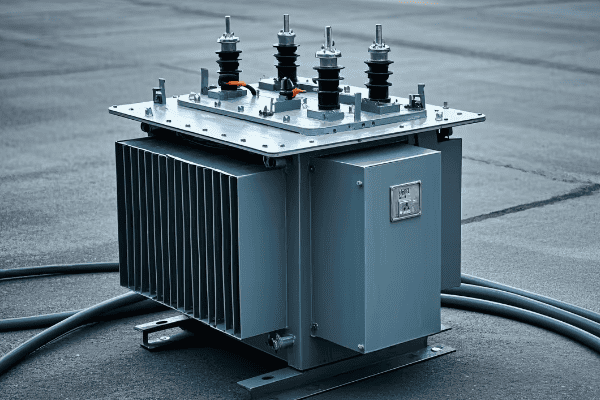
Let’s explore how size impacts various aspects of transformer performance:
Core Size and Efficiency
The core’s dimensions significantly affect transformer efficiency.
Core Considerations:
- Larger cores generally have lower core losses
- Increased core size allows for better flux distribution
- Optimal core sizing can reduce no-load losses
I once worked on a project where increasing the core size by 15% resulted in a 20% reduction in core losses. The efficiency gain justified the slight increase in overall dimensions.
Winding Design and Losses
Winding dimensions play a crucial role in load losses.
Winding Factors:
- Larger conductor cross-sections reduce resistance losses
- Increased winding height can improve cooling
- Optimal winding design balances copper losses and size
Cooling System Effectiveness
Dimensions directly impact cooling system design and effectiveness.
Cooling Considerations:
- Larger surface area allows for better heat dissipation
- Increased oil volume provides better thermal inertia
- Dimensions affect the placement and efficiency of cooling fins or radiators
Insulation and Voltage Stress
Proper dimensioning is crucial for managing voltage stress.
Insulation Aspects:
- Larger dimensions allow for better insulation between windings
- Increased oil gaps reduce electric field stress
- Proper sizing ensures adequate creepage and clearance distances
Load Handling Capacity
Size affects a transformer’s ability to handle various load conditions.
Capacity Factors:
- Larger transformers generally have better overload capacity
- Increased size allows for better heat management during peak loads
- Dimensions influence short-term and long-term overload capabilities
| Dimensional Aspect | Performance Impact | Efficiency Consideration |
|---|---|---|
| Core Size | Affects core losses | Larger core = lower no-load losses |
| Winding Dimensions | Influences copper losses | Optimal sizing reduces load losses |
| Cooling System Size | Impacts heat dissipation | Better cooling = higher efficiency |
| Insulation Space | Affects voltage withstand | Proper sizing ensures reliability |
| Overall Size | Determines load capacity | Larger size often allows higher output |
In my experience, the relationship between size and performance is not always straightforward. I remember a case where we were tasked with improving the efficiency of an existing transformer design. Initially, we thought simply increasing the overall size would solve the problem. However, through careful analysis and design optimization, we managed to achieve a 3% efficiency gain with only a minimal increase in dimensions.
It’s crucial to understand that bigger isn’t always better. I’ve seen instances where oversized transformers actually led to decreased efficiency due to higher core losses relative to the typical load. The key is to optimize the design for the specific load profile and operating conditions.
Don’t overlook the impact of size on transformer lifespan. Proper sizing, especially in terms of cooling capacity, can significantly extend a transformer’s operational life. In one industrial project, we opted for a slightly larger transformer with enhanced cooling. This decision not only improved efficiency but also extended the expected lifespan by several years.
Another important consideration is the trade-off between efficiency and cost. While larger, more efficient transformers may have higher upfront costs, they often provide significant savings over their lifetime through reduced energy losses. I always advise clients to consider the total cost of ownership, including lifetime energy costs, when evaluating transformer options.
Lastly, remember that the size-performance relationship can vary based on the transformer type and application. For example, the optimal sizing for a distribution transformer in an urban setting may differ significantly from that of a large power transformer in an industrial facility.
Understanding the complex relationship between transformer size and performance is crucial for making informed decisions. By carefully considering how dimensions impact efficiency, cooling, and load handling, you can select a transformer that provides optimal performance for your specific needs.
Critical Specifications in Pad Mounted Transformer Size Selection?
Are you struggling to identify the most important specifications when selecting a pad mounted transformer size? Many engineers overlook crucial details, leading to suboptimal choices.
Critical specifications for pad mounted transformer size selection include kVA rating, voltage class, impedance, temperature rise, BIL (Basic Impulse Level), and physical dimensions. These specifications ensure the transformer meets load requirements, safety standards, and installation constraints.

Let’s delve into the critical specifications for pad mounted transformer size selection:
kVA Rating
The kVA rating is fundamental in determining transformer size.
kVA Considerations:
- Matches the expected load requirements
- Accounts for future load growth
- Determines the transformer’s basic capacity
I once worked on a project where underestimating the kVA rating led to frequent overloading. Always factor in potential load increases when specifying this crucial parameter.
Voltage Class
Voltage class significantly impacts transformer size and design.
Voltage Specifications:
- Primary voltage rating
- Secondary voltage rating
- Tap settings for voltage adjustment
Impedance
Impedance affects fault current levels and system coordination.
Impedance Factors:
- Typical values range from 2% to 5.75%
- Higher impedance can limit fault currents
- Lower impedance can improve voltage regulation
Temperature Rise
Temperature rise specifications are crucial for transformer longevity.
Temperature Considerations:
- Standard rises: 55°C, 65°C, or 80°C
- Affects insulation life and overall efficiency
- Influences cooling system requirements
BIL (Basic Impulse Level)
BIL is critical for insulation coordination and overvoltage protection.
BIL Specifications:
- Varies based on voltage class
- Higher BIL may require larger clearances
- Crucial for lightning and switching surge protection
Physical Dimensions
Actual size specifications are essential for installation planning.
Dimensional Factors:
- Height, width, and depth
- Weight for foundation design
- Clearance requirements for maintenance and safety
| Specification | Importance | Impact on Size Selection |
|---|---|---|
| kVA Rating | Critical | Determines basic transformer capacity |
| Voltage Class | High | Affects insulation and overall size |
| Impedance | Medium | Influences fault current and regulation |
| Temperature Rise | High | Impacts cooling system and efficiency |
| BIL | High | Affects clearances and insulation |
| Physical Dimensions | Critical | Ensures proper fit in installation space |
In my experience, balancing these specifications is often challenging but crucial. I remember a project where we initially focused too much on the kVA rating without adequately considering the BIL requirements. This oversight led to issues with insulation coordination in the substation. We had to redesign parts of the installation, causing delays and additional costs.
It’s important to note that these specifications are interrelated. For instance, a higher kVA rating often necessitates larger physical dimensions, which in turn may affect the feasible temperature rise and cooling method. I’ve found that using a holistic approach when considering these specifications leads to the most effective transformer selections.
Don’t underestimate the importance of impedance in your specifications. In one industrial project, we carefully selected the impedance to balance fault current limitation with voltage regulation needs. This attention to detail significantly improved the overall system performance and safety.
Another crucial aspect is considering how these specifications affect long-term operation and maintenance. For example, specifying a lower temperature rise might increase the initial cost but can lead to longer insulation life and reduced cooling requirements. I always advise clients to consider the lifecycle costs, not just the upfront expenses.
Lastly, remember that local regulations and utility requirements can impact these specifications. I once worked on a project where the local utility had specific impedance requirements that differed from our initial calculations. Always check with local authorities and utilities when finalizing your specifications.
Careful consideration of these critical specifications is essential for selecting the right size of pad mounted transformer. By thoroughly evaluating kVA rating, voltage class, impedance, temperature rise, BIL, and physical dimensions, you can ensure that your transformer not only meets current needs but also provides reliable service for years to come.
Space Optimization: Choosing the Right Transformer Size for Limited Areas?
Are you facing challenges in fitting a pad mounted transformer into a tight space? Space constraints are a common issue that many engineers struggle with when selecting transformer sizes.
Optimizing transformer size for limited areas involves considering compact designs, alternative cooling methods, and creative installation solutions. Proper size selection balances space constraints with performance requirements, ensuring efficient power distribution in restricted environments.
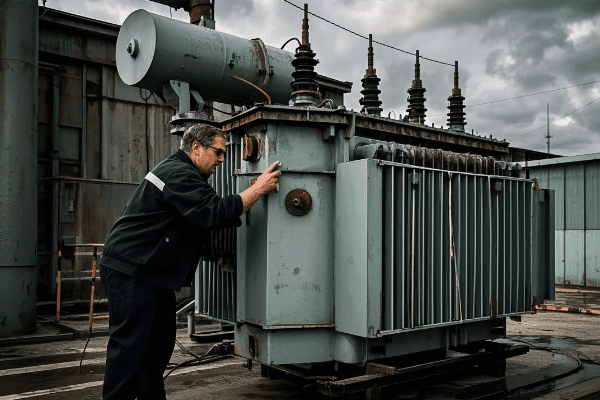
Let’s explore strategies for choosing the right transformer size in space-constrained situations:
Compact Transformer Designs
Modern compact designs can significantly reduce spatial requirements.
Compact Features:
- Low-profile models for height restrictions
- Slim-line designs for narrow spaces
- Integrated components to reduce overall footprint
I once worked on a project in a dense urban area where space was at a premium. We opted for a slim-line transformer design that fit perfectly in a narrow alley, saving valuable real estate.
Alternative Cooling Methods
Efficient cooling systems can allow for smaller transformer sizes.
Cooling Strategies:
- Advanced ONAF (Oil Natural Air Forced) systems
- Hybrid cooling designs
- High-efficiency radiators
Creative Installation Solutions
Innovative installation approaches can maximize limited space.
Installation Techniques:
- Underground vault installations
- Rooftop placements in urban settings
- Multi-level installations in industrial facilities
Load Management Techniques
Smart load management can allow for smaller transformer sizes.
Load Strategies:
- Peak shaving technologies
- Load shifting to off-peak hours
- Intelligent distribution systems
Modular and Scalable Designs
Modular approaches can provide flexibility in tight spaces.
Modular Benefits:
- Easier installation in confined areas
- Scalability for future expansion
- Simplified maintenance in restricted spaces
| Strategy | Space Saving Potential | Application Example |
|---|---|---|
| Compact Designs | High | Urban substations |
| Alternative Cooling | Medium | Industrial settings |
| Creative Installation | High | Underground parking areas |
| Load Management | Medium | Commercial buildings |
| Modular Designs | Medium to High | Expandable facilities |
In my experience, successful space optimization often requires a combination of these strategies. I remember a challenging project in a historic district where we had severe space and aesthetic constraints. We used a combination of a compact, low-profile design with advanced cooling and installed it in a specially designed underground vault. This solution not only met the space requirements but also preserved the area’s historical character.
It’s important to note that space optimization shouldn’t come at the cost of performance or safety. I’ve seen cases where overly aggressive space-saving measures led to cooling issues or complicated maintenance. Always ensure that your space-saving solutions don’t compromise the transformer’s functionality or longevity.
Don’t overlook the potential of vertical space. In one high-rise project, we utilized a rooftop installation for the transformer. This not only solved the ground-level space issue but also simplified the power distribution throughout the building.
Another crucial aspect is future-proofing your space-optimized design. I always advise clients to consider potential load growth and plan for it, even in tight spaces. In a recent project, we designed a modular system that allowed for easy expansion within the limited available area.
Lastly, remember that creative space optimization often requires close collaboration with architects, civil engineers, and local authorities. I’ve found that early engagement with all stakeholders can lead to innovative solutions that balance technical requirements with spatial and aesthetic considerations.
Choosing the right transformer size for limited areas is a challenge that requires innovative thinking and careful planning. By considering compact designs, alternative cooling methods, creative installations, smart load management, and modular approaches, you can optimize transformer size while ensuring efficient and reliable power distribution in even the most constrained environments.
Installation Guidelines for Various Pad Mounted Transformer Sizes?
Are you unsure about the best practices for installing different sizes of pad mounted transformers? Proper installation is crucial for the safety, efficiency, and longevity of these vital components.
Installation guidelines for pad mounted transformers vary based on size, ranging from small residential units to large industrial transformers. Key considerations include foundation requirements, clearance specifications, grounding methods, and safety measures, all of which scale with transformer size.
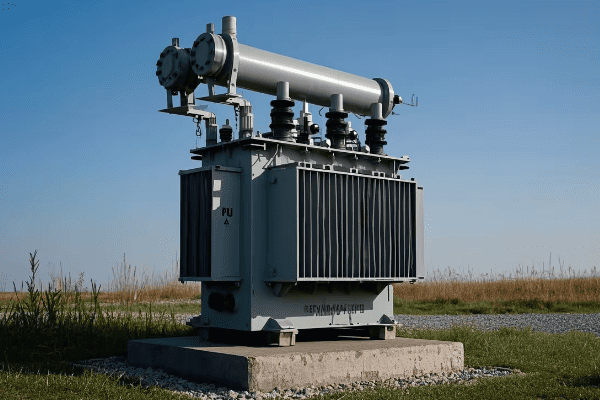
Let’s explore the installation guidelines for various pad mounted transformer sizes:
Small Transformers (Up to 500 kVA)
These are typically used in residential and small commercial applications.
Installation Considerations:
- Concrete pad thickness: Usually 4-6 inches
- Minimum clearances: Often 3 feet on all sides
- Grounding: Standard ground rod and cable
I once installed a 300 kVA transformer in a suburban area. The key was ensuring proper clearance from buildings while maintaining accessibility for maintenance.
Medium Transformers (500 kVA to 2000 kVA)
Common in larger commercial and small industrial settings.
Key Guidelines:
- Reinforced concrete pad: 6-8 inches thick
- Increased clearances: Typically 4-5 feet on all sides
- Enhanced grounding grid
- Oil containment considerations
Large Transformers (Above 2000 kVA)
Used in industrial and utility applications.
Installation Requirements:
- Heavy-duty concrete pad: 8-12 inches thick or more
- Extensive clearances: Often 6 feet or more on all sides
- Comprehensive grounding system
- Mandatory oil containment systems
- Special transportation and crane requirements
Universal Installation Practices
Some guidelines apply to all sizes:
Universal Considerations:
- Proper ventilation and airflow
- Protection from flooding and water ingress
- Secure fencing or enclosure
- Clear signage and safety warnings
Site-Specific Adaptations
Each installation may require unique adaptations.
Site Factors:
- Soil conditions for foundation design
- Local seismic requirements
- Environmental factors (e.g., corrosive atmospheres, extreme temperatures)
| Transformer Size | Pad Thickness | Minimum Clearance | Special Considerations |
|---|---|---|---|
| Small (< 500 kVA) | 4-6 inches | 3 feet | Basic grounding |
| Medium (500-2000 kVA) | 6-8 inches | 4-5 feet | Oil containment, enhanced grounding |
| Large (> 2000 kVA) | 8-12+ inches | 6+ feet | Extensive grounding, mandatory oil containment |
In my experience, adhering to these guidelines is crucial, but adaptability is equally important. I remember a challenging installation of a 2500 kVA transformer in a coastal area. We had to modify our standard practices to account for potential flooding and salt air corrosion. This included elevating the pad, using corrosion-resistant materials, and implementing an advanced cathodic protection system.
It’s important to note that while these are general guidelines, always consult local codes and utility requirements. I’ve encountered situations where local regulations were more stringent than general standards, particularly regarding oil containment and environmental protection.
Don’t overlook the importance of future maintenance access when planning your installation. In one industrial project, we initially designed the transformer placement for optimal current needs. However, after considering long-term maintenance requirements, we adjusted the layout to ensure easy access for equipment and personnel, which proved invaluable during subsequent servicing.
Another crucial aspect is coordinating with other site utilities. I once worked on a project where we had to carefully plan the transformer location to avoid conflicts with underground gas lines and water mains. Comprehensive site surveys and utility coordination are essential steps in the installation process.
Lastly, consider the aesthetic impact, especially in visible locations. In a recent commercial development, we worked closely with architects to design an enclosure that not only met all technical requirements but also complemented the building’s aesthetics. This collaborative approach satisfied both engineering needs and architectural vision.
Proper installation of pad mounted transformers, regardless of size, is critical for ensuring safe, efficient, and reliable operation. By following these guidelines and adapting them to your specific site conditions and local requirements, you can ensure a successful transformer installation that will serve its purpose effectively for years to come.
Load Capacity and Transformer Sizing: Ensuring Optimal Power Distribution?
Are you struggling to determine the right load capacity for your pad mounted transformer? Matching transformer size to load requirements is a common challenge that can significantly impact system efficiency and reliability.
Proper transformer sizing based on load capacity involves analyzing current demand, anticipating future growth, and considering load profiles. Optimal sizing ensures efficient power distribution, prevents overloading, and avoids unnecessary energy losses from oversized units.

Let’s explore the key aspects of matching load capacity to transformer sizing:
Current Load Analysis
Understanding your current load is the first step in proper sizing.
Load Assessment:
- Peak demand calculations
- Average load measurements
- Load factor determination
I once worked on a project where overlooking the peak demand led to frequent overloading. Always ensure your transformer can handle the highest expected load.
Future Load Projections
Anticipating future needs is crucial for long-term planning.
Growth Considerations:
- Estimated annual load growth rate
- Planned expansions or new equipment
- Potential changes in energy consumption patterns
Load Profile Evaluation
Different load profiles can significantly impact transformer sizing.
Profile Factors:
- Continuous vs. intermittent loads
- Daily and seasonal variations
- Power factor of the load
Overload Capacity
Consider the transformer’s ability to handle temporary overloads.
Overload Aspects:
- Short-term overload ratings
- Impact on transformer life
- Cooling system capabilities during overloads
Energy Efficiency Considerations
Proper sizing affects overall system efficiency.
Efficiency Factors:
- No-load losses at various load levels
- Load losses under typical operating conditions
- Optimal loading for maximum efficiency
| Load Aspect | Sizing Impact | Consideration Example |
|---|---|---|
| Current Peak Load | Sets minimum capacity | Must handle highest demand |
| Future Growth | Determines oversizing margin | 5-10 year projection typically |
| Load Profile | Influences rating selection | Continuous vs. intermittent loads |
| Overload Capacity | Affects short-term flexibility | Emergency overload capabilities |
| Energy Efficiency | Optimizes long-term performance | Balance between capacity and losses |
In my experience, balancing these factors is often challenging but crucial. I remember a case where we initially sized a transformer based solely on current peak load. However, after analyzing the load profile and growth projections, we opted for a unit with 20% additional capacity. This foresight proved invaluable when the facility expanded faster than expected just three years later.
It’s important to note that oversizing can be as problematic as undersizing. I’ve seen instances where grossly oversized transformers led to significant energy waste due to high no-load losses. The key is to find the sweet spot that meets current needs, allows for reasonable future growth, and maintains efficiency.
Don’t underestimate the impact of power factor on sizing decisions. In one industrial project, we discovered that poor power factor was causing the existing transformer to seem undersized. By implementing power factor correction, we were able to defer a costly transformer upgrade and improve overall system efficiency.
Another crucial consideration is the nature of the load. I worked on a project involving large motor loads with frequent starts. We had to carefully size the transformer to handle the inrush currents without oversizing for steady-state operation. This required detailed analysis of the motor characteristics and starting sequences.
Lastly, consider the economic aspects of your sizing decision. I always advise clients to perform a lifecycle cost analysis, considering initial costs, energy losses, and potential upgrade needs. In many cases, a slightly larger, more efficient transformer can provide significant long-term savings despite higher upfront costs.
Ensuring optimal power distribution through proper load capacity and transformer sizing is a complex but essential task. By carefully analyzing current loads, projecting future needs, evaluating load profiles, and considering efficiency factors, you can select a transformer size that provides reliable, efficient service for years to come.
Energy Efficiency Trends: Modern Approaches to Pad Mounted Transformer Sizing?
Are you aware of the latest energy efficiency trends in pad mounted transformer sizing? Keeping up with these developments is crucial for designing sustainable and cost-effective power distribution systems.
Modern approaches to pad mounted transformer sizing focus on minimizing losses, optimizing load factors, and integrating smart technologies. These trends aim to improve overall system efficiency, reduce operating costs, and meet increasingly stringent energy standards.
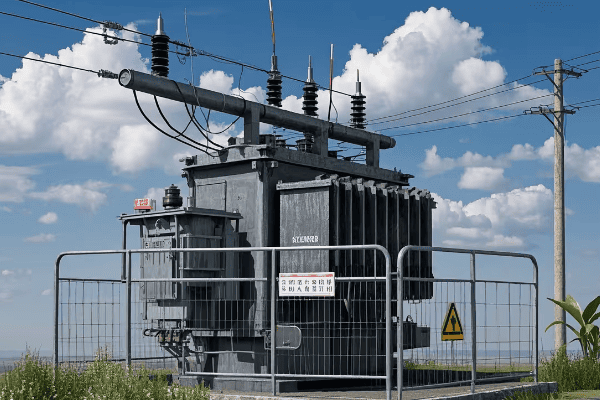
Let’s explore the current trends in energy-efficient transformer sizing:
High-Efficiency Core Materials
Advanced core materials are revolutionizing transformer efficiency.
Material Innovations:
- Amorphous metal cores
- Advanced silicon steel grades
- Nano-crystalline materials
I recently worked on a project where switching to amorphous core transformers resulted in a 70% reduction in no-load losses. The energy savings were substantial, justifying the higher initial cost.
Optimized Winding Designs
New winding techniques are reducing load losses.
Winding Advancements:
- Continuously transposed conductors
- Foil windings for better current distribution
- Advanced insulation materials for improved heat dissipation
Smart Sizing Algorithms
AI and machine learning are enhancing sizing accuracy.
Smart Sizing Features:
- Load prediction algorithms
- Dynamic efficiency optimization
- Real-time load management integration
Total Ownership Cost Approach
Modern sizing considers long-term costs, not just initial expenses.
Cost Considerations:
- Lifecycle energy loss calculations
- Maintenance and reliability factors- Environmental impact assessments
Integration with Renewable Energy
Transformer sizing now accounts for renewable energy integration.
Renewable Considerations:
- Bi-directional power flow capabilities
- Harmonics management for solar and wind inputs
- Energy storage system compatibility
| Efficiency Trend | Impact on Sizing | Benefit |
|---|---|---|
| High-Efficiency Cores | May allow smaller sizes | Significant reduction in no-load losses |
| Optimized Windings | Better performance in compact designs | Reduced load losses |
| Smart Algorithms | More precise sizing | Improved load matching and efficiency |
| Total Ownership Cost | May justify larger, more efficient units | Long-term cost savings |
| Renewable Integration | Requires more flexible sizing | Better support for green energy |
In my experience, these modern approaches are transforming how we think about transformer sizing. I recall a recent project where we implemented a smart sizing algorithm that considered historical load data and future projections. This approach allowed us to select a transformer that was 15% smaller than what traditional methods would have suggested, while still meeting all performance requirements.
It’s important to note that while these trends offer significant benefits, they often come with higher initial costs. I always advise clients to consider the long-term savings. In one case, we calculated that the energy savings from a high-efficiency transformer would offset its higher purchase price within just three years.
Don’t overlook the impact of these trends on maintenance and reliability. I’ve observed that transformers sized using these modern approaches often have longer lifespans and require less frequent maintenance. This not only reduces costs but also improves overall system reliability.
Another crucial aspect is the adaptability to changing load profiles. In a recent commercial project, we sized a transformer using smart algorithms that could adapt to varying loads from electric vehicle charging stations. This forward-thinking approach ensured the transformer could efficiently handle both current and future load scenarios.
Lastly, consider the environmental impact of your sizing decisions. I’ve been involved in projects where the reduced energy losses from efficiently sized transformers significantly lowered the carbon footprint of the entire facility. This aspect is becoming increasingly important as companies focus on sustainability goals.
Embracing these modern approaches to pad mounted transformer sizing can lead to more efficient, cost-effective, and environmentally friendly power distribution systems. By staying informed about these trends and applying them judiciously, you can ensure your transformer installations are at the forefront of energy efficiency and performance.
Industry-Specific Considerations in Pad Mounted Transformer Size Selection?
Are you aware that different industries have unique requirements for pad mounted transformer sizing? Overlooking these industry-specific needs can lead to suboptimal performance and increased costs.
Industry-specific considerations in pad mounted transformer size selection include varying load profiles, environmental factors, regulatory requirements, and future expansion needs. Tailoring transformer sizes to specific industry needs ensures optimal performance, compliance, and long-term reliability.
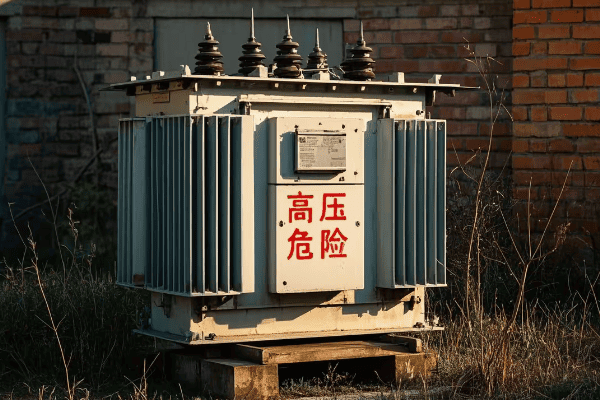
Let’s explore the key considerations for transformer sizing in various industries:
Industrial Manufacturing
Manufacturing facilities often have unique power requirements.
Key Considerations:
- High inrush currents from large motors
- Varying load profiles due to production cycles
- Harmonic distortion from variable frequency drives
I once worked on a project for a steel mill where we had to carefully size the transformer to handle the massive inrush currents from electric arc furnaces. Standard sizing methods were inadequate for this specialized application.
Commercial and Retail
Retail environments have their own set of challenges.
Sizing Factors:
- Peak load during business hours
- Minimal nighttime loads
- Seasonal variations in energy consumption
- Future expansion for additional tenants
Data Centers
Data centers require highly reliable and efficient power supply.
Data Center Specifics:
- High load density
- Constant power demand
- Redundancy requirements
- Cooling load considerations
Renewable Energy Integration
Renewable energy projects have unique transformer needs.
Renewable Considerations:
- Bi-directional power flow
- Intermittent generation patterns
- Harmonic content from inverters
- Future capacity expansion
Healthcare Facilities
Hospitals and medical centers have critical power needs.
Healthcare Factors:
- Life-critical equipment reliability
- Isolation for sensitive medical devices
- Emergency power system integration
- Strict regulatory compliance
| Industry | Unique Sizing Factor | Impact on Transformer Selection |
|---|---|---|
| Manufacturing | High inrush currents | May require oversizing or special designs |
| Retail | Varying daily loads | Need for efficient operation at partial loads |
| Data Centers | Constant high loads | Focus on high efficiency and reliability |
| Renewable Energy | Intermittent generation | Requires flexible and bi-directional capability |
| Healthcare | Critical reliability | Emphasis on redundancy and power quality |
In my experience, understanding these industry-specific needs is crucial for proper transformer sizing. I remember a project for a large data center where we initially applied standard commercial sizing practices. However, after analyzing the constant high load and redundancy requirements, we had to significantly revise our approach, opting for multiple smaller, high-efficiency units instead of a single large transformer.
It’s important to note that industry-specific considerations often intersect with local regulations and standards. In a healthcare project, we had to navigate both medical equipment requirements and stringent local codes for critical power systems. This dual compliance necessitated a carefully tailored sizing approach.
Don’t overlook the importance of future-proofing in industry-specific sizing. In a retail development project, we factored in potential expansion and changing tenant needs. This foresight allowed for easy capacity increases without major infrastructure changes, saving significant costs in the long run.
Another crucial aspect is the environmental impact of industry-specific operations. In a manufacturing plant project, we had to consider not just the power requirements but also the harsh, dusty environment. This led us to select a transformer with enhanced cooling and filtration systems, ensuring longevity in challenging conditions.
Lastly, consider the unique maintenance needs of different industries. For a remote renewable energy installation, we sized the transformer with a focus on reliability and ease of maintenance, given the limited access to the site. This approach minimized the need for frequent service visits, reducing operational costs.
Understanding and addressing industry-specific considerations in pad mounted transformer sizing is essential for creating efficient, reliable, and cost-effective power distribution systems. By tailoring your approach to the unique needs of each industry, you can ensure that your transformer installations meet both current requirements and future challenges.
Conclusion
Selecting the right size for pad mounted transformers is crucial for efficient and reliable power distribution. By considering load requirements, environmental factors, industry-specific needs, and energy efficiency trends, engineers can ensure optimal transformer performance. Proper sizing not only meets current needs but also accommodates future growth and technological advancements.
Free CHBEB Transformer Catalog Download
Get the full range of CHBEB transformers in one catalog.
Includes oil-immersed, dry-type, pad-mounted, and custom solutions.
Quick Message
Request A free quote
We'd like to work with you
- +86 15558785111
- [email protected]
- +86 15558785111
What We Do
CHINA BEI ER BIAN (CHBEB) GROUP, with 218 million in registered capital, originated from Beijing Beierbian Transformer Group. Headquartered in Beijing for R&D, it operates major production bases in Nanjing and Yueqing, producing high-quality products.
Latest Product
address
BeiJing
No 3,RongJing East Road,BeiJing Economic Technological Development Area,BeiJing,China
JiangSu
No 7️Xiangfeng Road,Jiangning,NanJing,JiangSu,China
WenZhou
No.211, Wei 16 Road, Industrial Zone, Yueqing, Wenzhou, Zhejiang, China.
XiangYang Industrial Zone ,YueQing,WenZhou,ZheJiang,China
contact us
- [email protected]
- +86 13057780111
- +86 13057780111
- +86 15558785111
Copyright © Bei Er Bian Group


